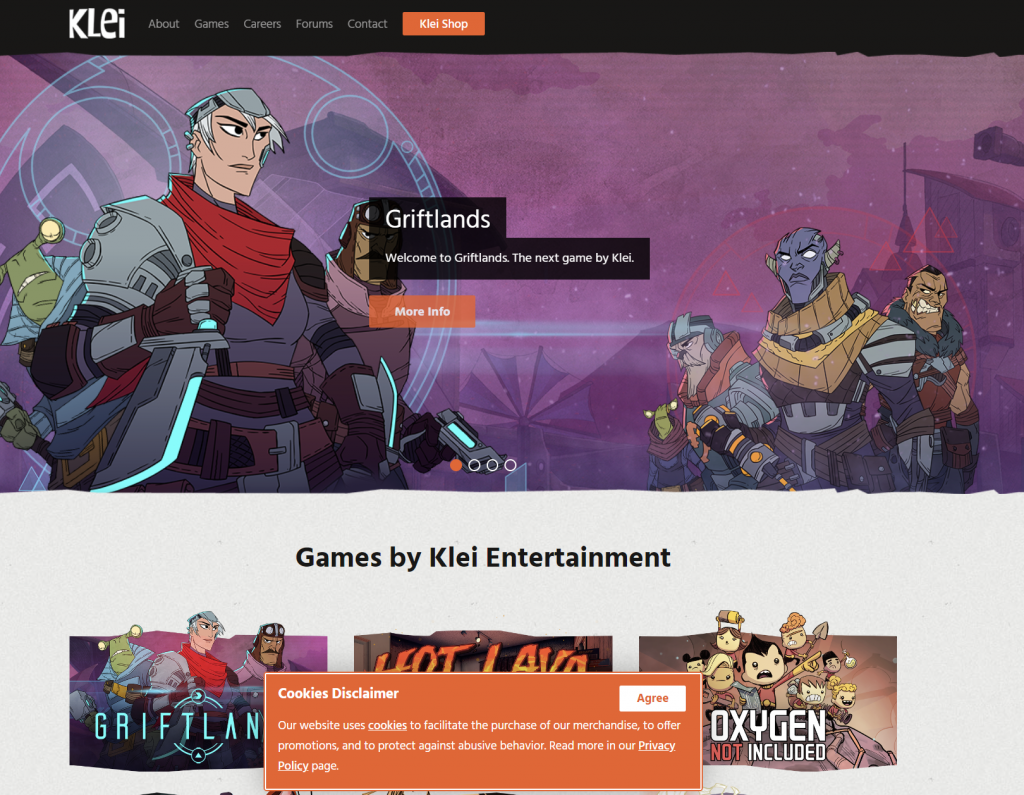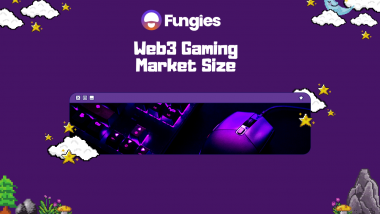Branding’s Immense Impact For indie game developers, branding isn’t just a luxury reserved for big-name publishers. It transcends mere marketing, shaping your game’s strategy, influencing your hiring decisions, sculpting your company’s culture, and even dictating your distribution strategies.
While some might see branding as just a corporate buzzword, it’s more profound than that. It’s not merely about crafting a marketing strategy; it’s about knowing and embodying your essence.
Approach branding with the same fervor and dedication you invest in game development. Many brands sprout organically, driven by the game’s character or the spirit of its creators. Yet, this natural emergence doesn’t diminish the need for intentional and strategic branding.
Branding Dissected: The Philosophy & Practicality
At its core, branding fuses two distinct yet interconnected dimensions: philosophy and practicality. Let’s dive deeper:
1. Philosophical Branding: This dimension delves into the essence of your brand, crystallizing your studio and game’s unique identity. It’s about articulating the core ethos of your company and game, encapsulating the “who”, “what”, and especially the “why”. Think of branding as your reputation: it shapes public discourse about you, and ideally aligns with how you desire to be perceived.
Take Electronic Arts (EA) for instance. Their tagline “If it’s in the game, it’s in the game” wasn’t just catchy words; it was a commitment to realism. Their audience came to expect unparalleled authenticity from their sports games, and rightly held EA to that standard. A brand, succinctly put, is a “promise consistently upheld”.

2. Practical Branding: This dimension focuses on tangible manifestations of your brand:
- Company and game names
- Logos
- Key messages, slogans, and taglines
- Advertising campaigns
- Online presence, including websites
- Trademarks
- Social media footprints
- Overall marketing schemes
Your games, too, are an embodiment of your brand. Each game you release intricately weaves into your brand’s fabric.
Journey to Brand Mastery Your brand encapsulates your essence and aspirations. It serves as an anchor, defining your game and company’s unique persona. More than just the “what” and “how”, it’s vital to identify the “why” behind your endeavors. With a clear “why”, your brand’s voice becomes resonant and authentic.
Branding, when done right, can be transformative. It’s the North Star for marketing, illuminating the path ahead.
Quick Tip: Initiating the branding process early can create a cohesive vision for your studio. Successful companies, enjoying a devoted clientele, often owe part of their triumph to potent branding.
Deep Dive into Established Brands
To truly understand the impact and power of branding, let’s explore further into the terrain of established brands that have carved a niche for themselves in the dynamic world of business.
Apple’s Success: The brand Apple is synonymous with innovation and simplicity. From its inception, Apple embraced a philosophy of minimalism. This meant decluttering their product designs, ensuring their interfaces were user-friendly, and ensuring their marketing messages were succinct yet impactful. Apple’s brand promise revolved around intuitive products, and their branding effectively communicated this. Apple’s branding extends beyond just their products; it is evident in their clean retail spaces, their minimalist ad campaigns, and the ecosystem they’ve built around their products.
Contrast this with Microsoft, a tech behemoth that adopted a “more is more” approach. Microsoft’s brand promise is centered on equipping its users with a plethora of tools and options. This approach has its merits, and while some might argue that it’s overwhelming, it’s clear that it resonates with a significant audience. Microsoft’s brand promise is evident in their multi-faceted operating systems and their suite of applications that cater to both casual users and professionals.
Then there’s Google, which came onto the scene with the bold declaration to “Do No Evil.” This brand promise of ethical operations and user-first approach garnered significant goodwill. But has this brand promise stood the test of time? The jury is still out.
Shifting the lens to the gaming industry, companies like Nintendo have established clear brand identities. Nintendo’s commitment to making gaming accessible to all demographics, from avid gamers to the elderly, has been a defining aspect of its brand. This commitment to inclusivity and simplicity is reminiscent of Apple’s approach.
One can’t help but ponder what would happen if a brand like EA Sports, known for its realistic sports simulations, ventured into creating a medieval RPG. Such a move would be a significant deviation from their brand promise, and the reaction would undoubtedly be mixed.
Creating a Brand: The Journey
The process of brand development, while seemingly daunting, can be distilled into eight foundational steps. Whether it’s for a game, a company, or any product, these steps remain consistent.
- Factual Foundation: Start with the basics. Understand your company’s history, its founders, location, and every other tangible fact that can provide context.
- Purpose and Differentiation: Dive deep into the “why” behind your brand. Understand what sets you apart and why customers should care. This self-awareness is vital for a brand’s authenticity.
- Brand Personality: Much like humans, brands have personalities. Is your brand quirky, serious, fun, or educational? This personality will shape every interaction with your audience.
- Know Your Competitors: To carve a niche, you must understand the market landscape. Knowing your competitors and what they offer will guide your unique positioning.
- Audience Understanding: Your target audience is the backbone of your branding. Understand their preferences, behaviors, and needs. Their feedback can be invaluable.
- Unique Proposition: Highlight what sets you apart. This is the crux of your branding and will determine how your audience perceives you.
- Brand Statement: This statement, often internal, is a succinct articulation of your brand’s essence. It should be a guiding principle for all brand-related decisions.
- Document Everything: Create a comprehensive document that encapsulates everything about your brand. This “brand bible” will be a touchstone for every branding decision.
Branding is also about the tangible assets. Your company’s logo, promotional materials, and online presence must resonate with your brand’s essence. Remember, a consistent brand image is key to recognition and recall.
However, with branding also comes the responsibility of protecting your intellectual property. This includes trademarking and ensuring your brand’s name and image are not misused.
Case study: Klei Entertainment

Klei Entertainment, located in Vancouver, British Columbia, serves as a prime example of how a studio can craft a robust brand identity. Their visual presentation acts as a connective tissue, linking diverse games under a single recognizable banner. From the vibrant Eets puzzle game to the intense side-scrolling action of Shank, the somber tones of Don’t Starve, or the suave design of Invisible, Inc., players can instantly recognize the signature Klei touch.
Key contributors to this brand identity include:
- Distinctive Worlds: Each game offers a unique experience, but all maintain a commitment to meticulous detail and presentation.
- Quality Game Production: The studio is known for its craftsmanship, evident in smooth animations, special effects, responsive controls, and engaging interactions.
- Commitment to Excellence: Every aspect, from gameplay mechanics to narrative elements, is refined to ensure the highest quality.
The Klei brand is discernible in various facets of their work:
- In-game Experience: This includes the game’s initial screens, menus, user interface, and the core game content itself.
- Promotional Material: This comprises memorable key artwork centered around iconic characters, standout logo designs, and engaging game trailers and cinematics.
- Digital Footprint: Their company website and their presence at trade shows further amplify their brand.
Moreover, Klei actively fosters its brand by nurturing a rapport with its community. They’ve utilized early access programs for several releases, incorporating feedback into their development process. Their active engagement on social media, forums, and trade shows underscores their commitment to open communication.
Klei’s branding strategy transcends the conventional – it’s not about catchphrases or slogans. They don’t rely on flashy taglines; instead, the essence of the Klei brand is palpable in every piece of content they produce. Their brand identity is woven into the very fabric of game design, production, and delivery.
In Summary:
Effective branding can elevate a company to the echelons of the most influential global entities. Such branding can transform a game’s popularity into interest for the studio’s other offerings—both new and old. This not only creates avenues for potential cross-selling and periodic merchandising but also empowers devoted fans to become brand evangelists, sharing their passion with others.
Branding: The Conclusion
Branding isn’t merely about logos and taglines. It’s the soul of your company. It’s how your audience perceives you and how you project yourself to the world. Whether consciously cultivated or formed organically, your brand identity will play a crucial role in your success. Proactive efforts in shaping and maintaining a brand promise can be the difference between being lost in the crowd and standing out.






